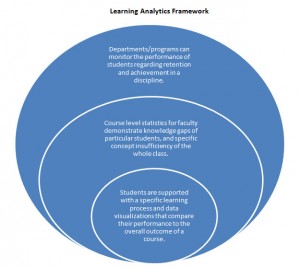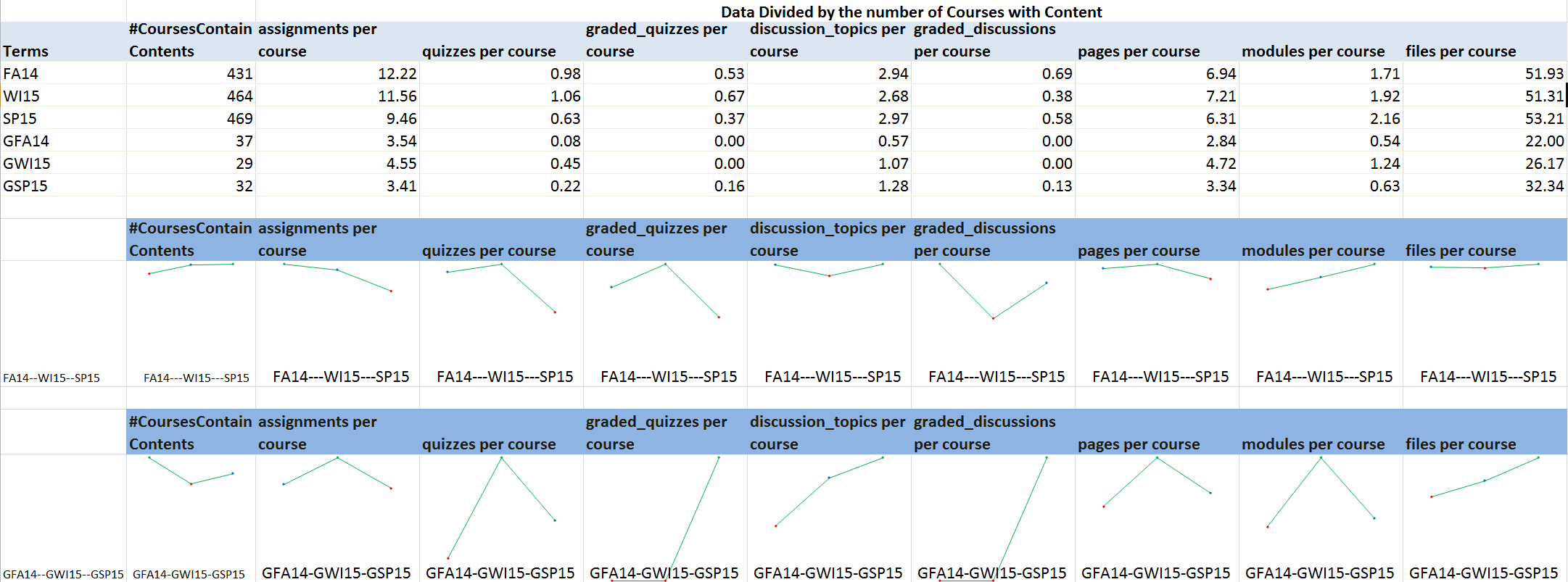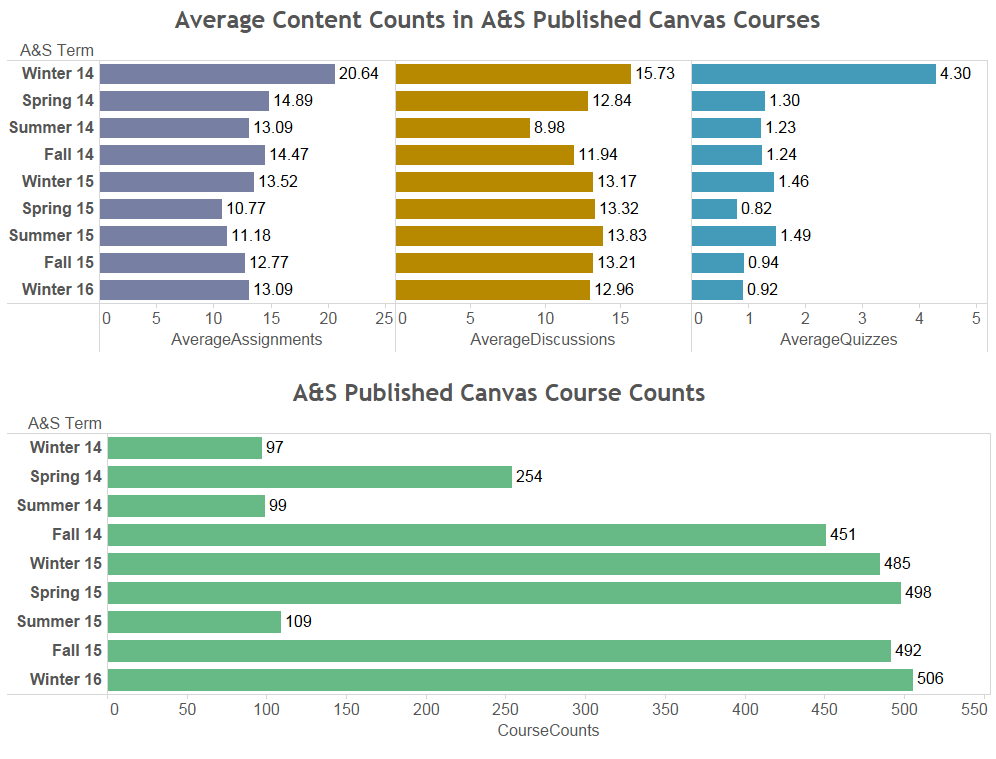Learning Analytics (LA) is a field of research that aims to predict and advise on learning, further to support faculty in identifying students’ learning needs and improve pedagogical strategies (Siemens, 2012; Verbert, Manouselis, Drachsler & Duval, 2012; Greller&Drachsler, 2012).
Verbert and his associates identified six highly interrelated objectives which are relevant in existing learning and knowledge analytics research (Verbert, Manouselis, Drachsler & Duval, 2012):
- Predicting learner performance and modeling learners
- Suggesting relevant learning resources
- Increasing reflection and awareness
- Enhancing social learning environments
- Detecting undesirable learner behaviors
- Detecting affects of learners
The results derived from LA research suggest that the learning data of students enrolled in programs with competence-based model can inform program core curriculum design. Under that assumption, I came up with a framework that illustrates how Learning Analytics can contribute to positive outcomes at the level of individual students, courses and departments.
- Analyzing students’ data in learning diligence and outcome can hopefully target learners’ meta-cognition, foster awareness and reflection about one’s learning processes.
- Data analysis from the student level can inform instructors to implemented targeted interventions and enhance their teaching practices (Greller & Drachsler, 2012).
- Departments/programs can monitor the performance of students regarding retention and achievement in a discipline. Furthermore, they can evaluate course offerings within the discipline and improve outcomes of the programs.

REFERENCE:
Ali L., Hatala M., Gasevis D & Jovanovic J. (2012). Computers & Education, 58 (1), 470-489, Available at http://www.sciencedirect.com/science/journal/03601315/58/1
Greller, W., & Drachsler, H. (2012). Translating Learning into Numbers: A Generic Framework for Learning Analytics. Educational Technology & Society, 15 (3), 42-57.
Siemens, G. (2012). Learning Analytics: Envisioning a Research Discipline and a Domain of Practice. LAK ’12 Proceedings of the 2nd International Conference on Learning Analytics and Knowledge , 4-8. Available at http://dl.acm.org/citation.cfm?id=2330605
Verbert, K., Manouselis, N., Drachsler, H., & Duval, E.(2012). Dataset-Driven Research to Support Learning and Knowledge Analytics. Educational Technology & Society, 15 (3), 133-148.




